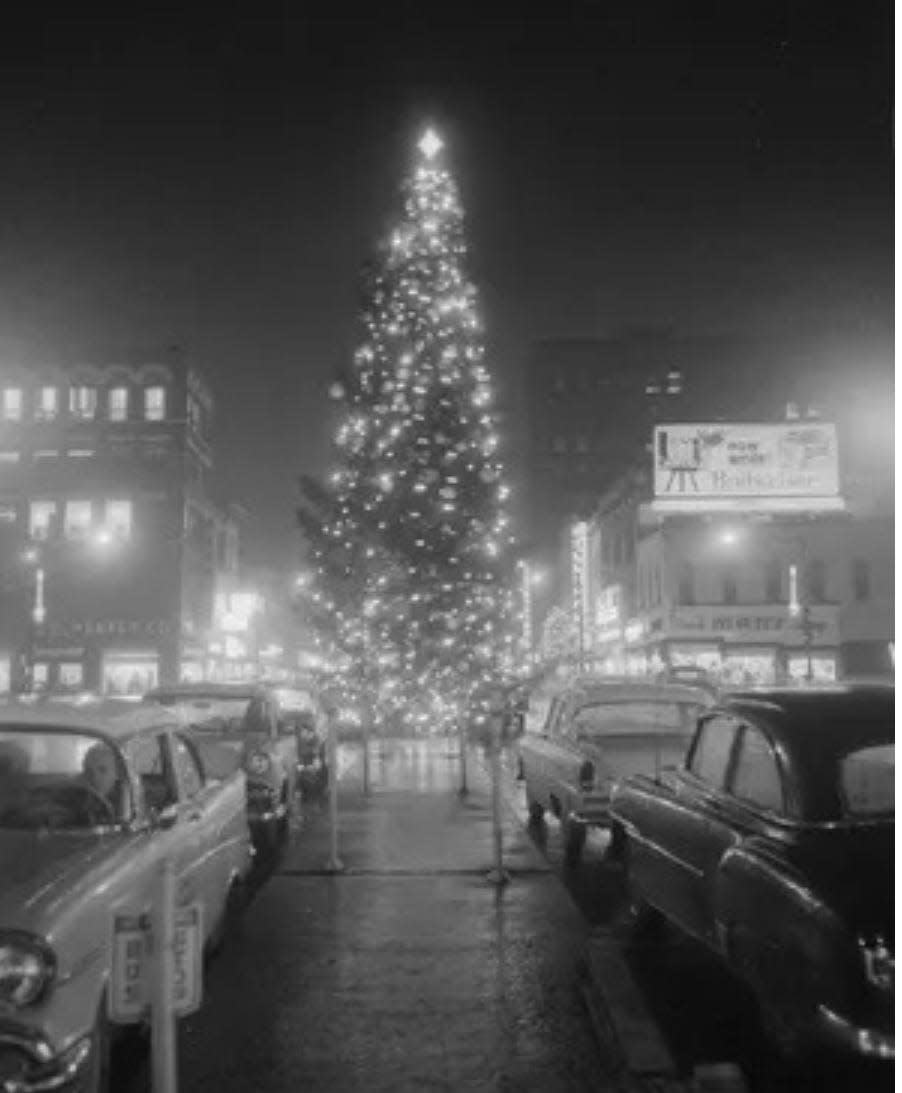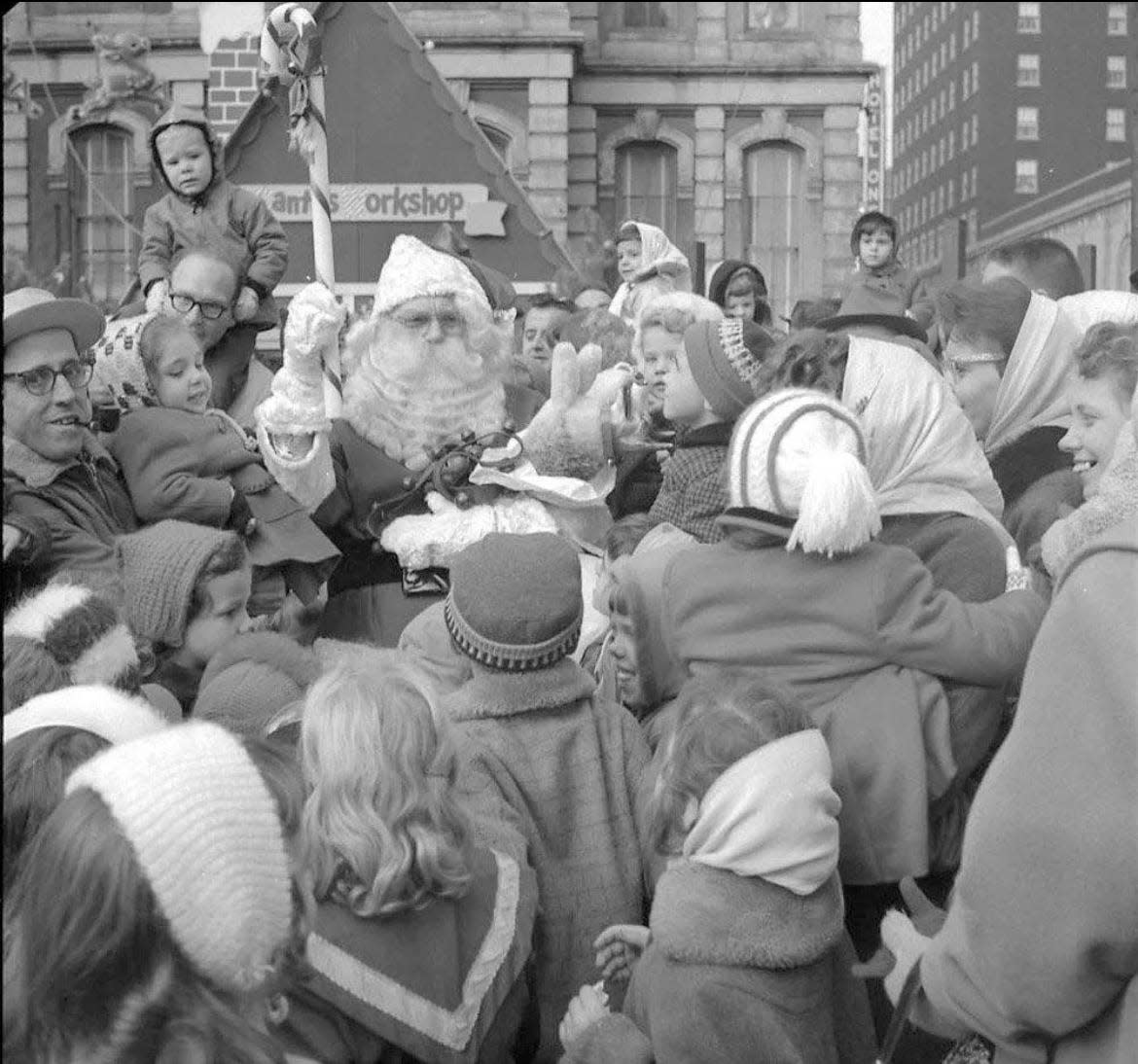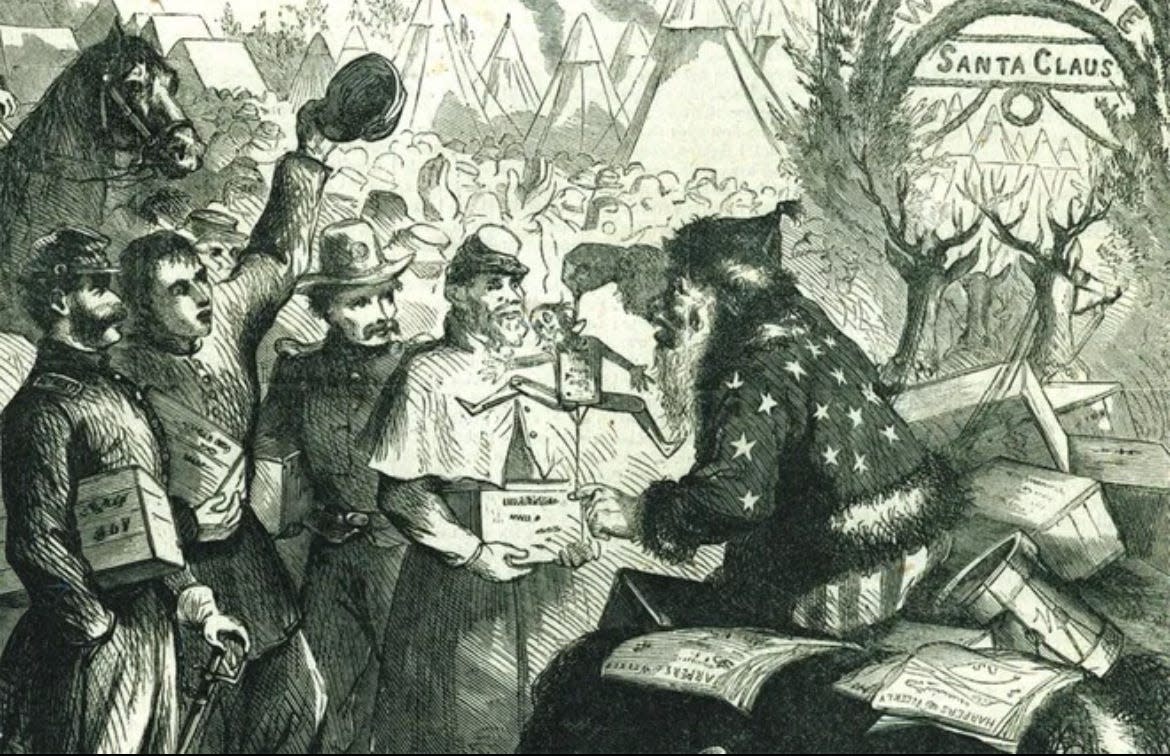Canton didn't unwrap Christmas joy until mid-1800s

The Grinch had no need to steal Christmas during Stark County's early days.
Historian E.T. Heald noted in a 1948 WHBC Christmas Day broadcast that the holiday wasn't even a notable occasion in the Canton area during the city's infancy.
"So universal and complete has the observance of Christmas become that it is hard for us to realize that Christmas was not celebrated as a holiday in the early days of Canton or Stark County, or in the State of Ohio," recalled Heald in Volume II, "The McKinley Era," of his series of history books called "The Stark County Story," texts which collect his radio broadcasts.
E.T. Heald on Stark County: Who came first?
"Christmas was just another day of work. ... On Christmas the stores were open. The year-round ads never carried a word about Christmas gifts. Law courts were in session, deciding cases and issuing writs and orders. Sheriff's sales were held as usual. Churches did not hold Christmas services, people did not send Christmas cards or letters. Neither houses nor streets were decorated. "Christmas trees were unknown, or at least not mentioned."
The Ohio Repository, as it was called in those early days of Stark County, was published on Christmas Day 1823. That year, Christmas was a Thursday, the day of the week that the weekly newspaper was distributed. In the previous six days, there would have been time for founder John Saxton to cobble together a holiday feature, Heald insinuated.
"There was not a word in the newspaper about Christmas."

Christmas catches on in Canton
The Repository, which was Heald's main source of information about the early celebration of Christmas, did not indicate an observance of the holiday for two more decades, the historian said in his 1948 broadcast.
"It was nine years after the state Legislature first observed Christmas, namely, in the issue of Dec. 21, 1843, that Christmas was first referred to in The Repository," Heald noted. "In this issue the word Christmas appeared twice, once in connection with a concert given by the Odeon Association and once in connection with a poem."
It was not until the 1850s that store ads began to reflect the buying power of the season.
The Monday After: Ralph Regula and his seven presidential pals
Heald's research of preserved files of the Repository discovered that in 1852 three stores advertised the availability of "holiday" gifts.
"Danner's advertised albums and books for the 'hollidays' (sic); Saxton's a great variety of 'Holliday (sic) presents'; while J.J. Fast & Son advertised Christmas and New Year presents 'in all variety' at their 'cheap book store.'"
That holiday season in 1852 also offered a Christmas Eve event, Heald's research learned.
"The Canton Lyceum announced it would hold its regular meeting that evening in the lecture room of the Baptist Church and discuss the question 'Ought the death penalty be abolished for the commission of a capital offense,' hardly the subject one would expect to be picked for Christmas Eve."
'Modern' Christmas begins
According to an article written by Gayle Beck in the Repository in 2011, observing the sesquicentennial of the start of the Civil War, "a surprising number of Christmas traditions we enjoy today began or became widely popular in the early 1860s."
"The first Santa that resembles the character we know today was drawn by cartoonist Thomas Nast for the front page of the Jan. 3, 1863, issue of the newspaper Harper's Weekly. Called the 'Santa Claus in Camp,' Nast's engraving shows Santa distributing gifts to Union soldiers from his reindeer-drawn sleigh."

Beck spoke to Ohioan Steve Ball, who in 2011 was researching and recording Civil War music and performing it, to determine the holiday music that Canton-area residents would have been exposed to during the Civil War era.
"Carols that Stark Countians would have sung during the Civil War – at home and in military camps – included 'Hark, the Herald Angels Sing' (written in 1840), 'It Came Upon the Midnight Clear' (1850), 'Jingle Bells' (1857), and 'We Three Kings of Orient Are' (1857)."
Christmas trees and the gifts placed under their lowest limbs similarly were part of the Civil War holiday celebration, Beck recalled.
"During the Civil War era, Christmas trees were small enough to sit on a table and were decorated with glass ornaments, popcorn, candles, fruit and mistletoe," she wrote. "In their camps, Union soldiers decorated evergreen trees with salt pork and hardtack."
Christmas trees and holiday films
Heald's research indicates that it was not until after the Civil War that full-size standing Christmas trees were "referred to locally."
"In that year, Faber's, who was one of the most aggressive Christmas advertisers, offered exquisite gilt trimmings for Christmas trees," Heald said in his broadcast. "The same year appeared the first announcement of a tree in a church or Sunday School service, the English Lutheran Sabbath School holding a Christmas Tree Festival Christmas Eve."
Another holiday tradition, going to a movie while family members are not in school or are off work, can be traced to early in the 1900s through the Roaring ’20s, Heald noted in a Christmas Eve broadcast of Dec. 24, 1951.
The Dreamland, Dixie, Grand, Odeon, Orpheum, Alhambra, Valentine, Palace, Strand, Windsor, Lyceum, Melba, McKinley and Mozart were among the popular theaters in Canton.
"For 15 years, the favorite form of Christmas entertainment for Cantonians, as in the rest of the country, was the silent movie," he told radio listeners and later to readers of his "Industry Comes of Age" edition of "The Stark County Story."
"A review of the movie Christmas holiday programs for this silent movie era, 1911 to 1926, not only stirs happy memories for the oldsters who saw the pictures but will be of interest by way of contrast to youngsters who have only known sound and technicolor pictures."
Christmas events at Stark County theaters included not only current films of that day – including Edison's allegorical drama "The First Christmas" – but also orchestra music and gifts for children.
"The Odeon also attracted children by offering a box of candy to every boy and girl who attended Christmas Day, admission for children being 5 cents and adults 10 cents, which were still the prevailing movie rates."
Recalling shopping downtown
One of the most vivid holiday memories for many is Christmas shopping in downtown Canton. In an article published in the Repository in December 2016, Ed Balint painted a vivid picture of the holiday bustle with his words.
Included in the memory were "Christmas lights and decorations strewn about downtown and adorning street lights and poles."
"Sidewalks were bustling with men and women and boys and girls, shuffling from department store to department store among other retailers," Balint wrote. "Santa Claus was on the scene, children nestled on his lap declaring their Christmas wishes. This was downtown Canton in the 1930s, 1940s, 1950s. The golden days of holiday shopping, the county's epicenter of gift-buying."
Newspaper ads drew shoppers during those decades to such stores as JC Penney's, Kobacker's, Arcade Market, The Parisian Co., Stern and Mann, Polsky's, O'Neil's, Stark Dry Goods, S.S. Kresge, and Sears, Roebuck & Co.
"Window displays of downtown stores, the aroma of baked goods in the center of the city shops, crowds on the sidewalks leading from the city's square still remain in the memories of those who experienced them.
"I can close my eyes," one former downtown shopper, Marcia Pfaus, told Balint, "and picture happiness."
Reach Gary at gary.brown.rep@gmail.com. On Twitter: @gbrownREP.
This article originally appeared on The Alliance Review: Canton didn't unwrap Christmas joy until mid-1800s
